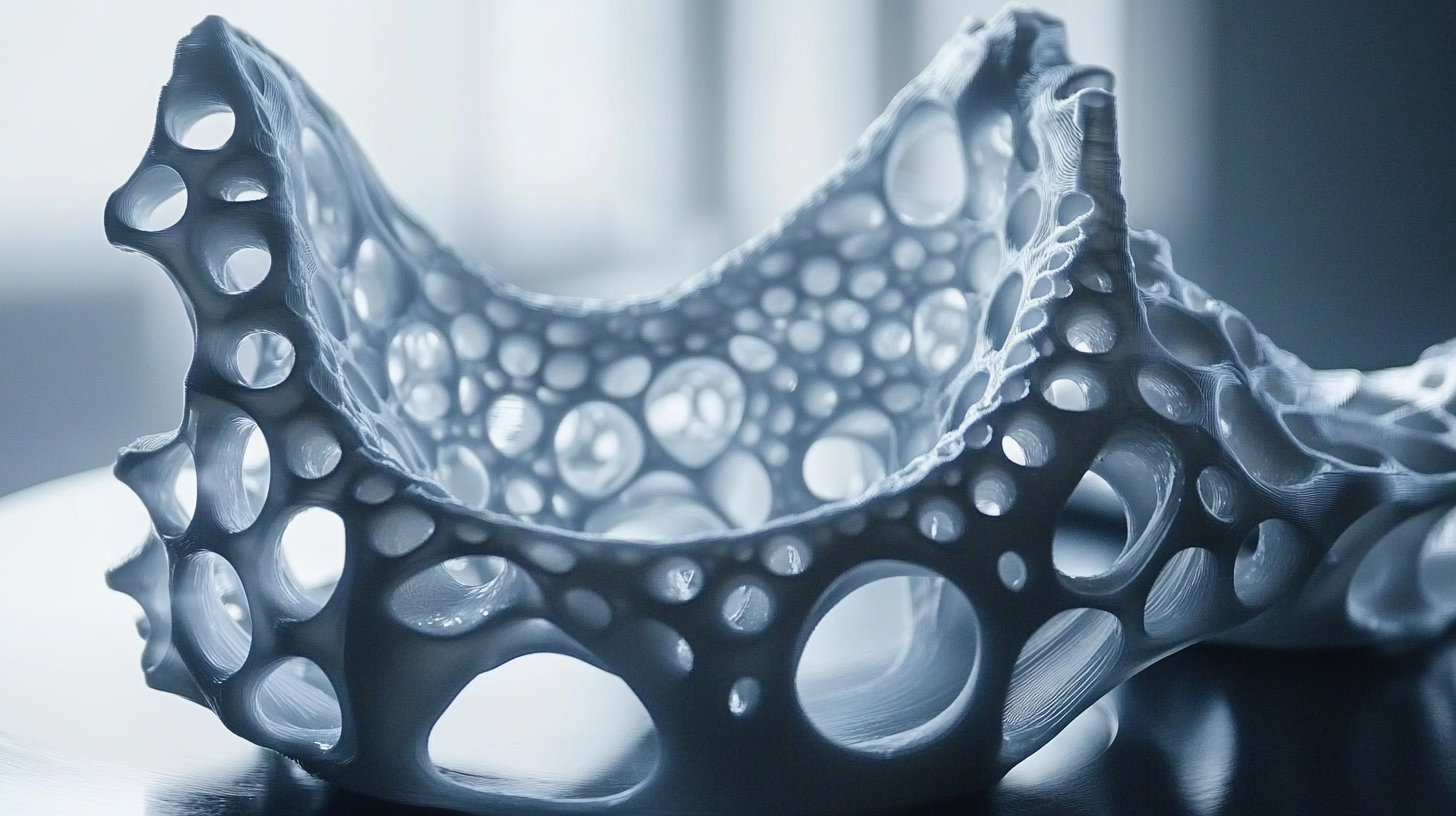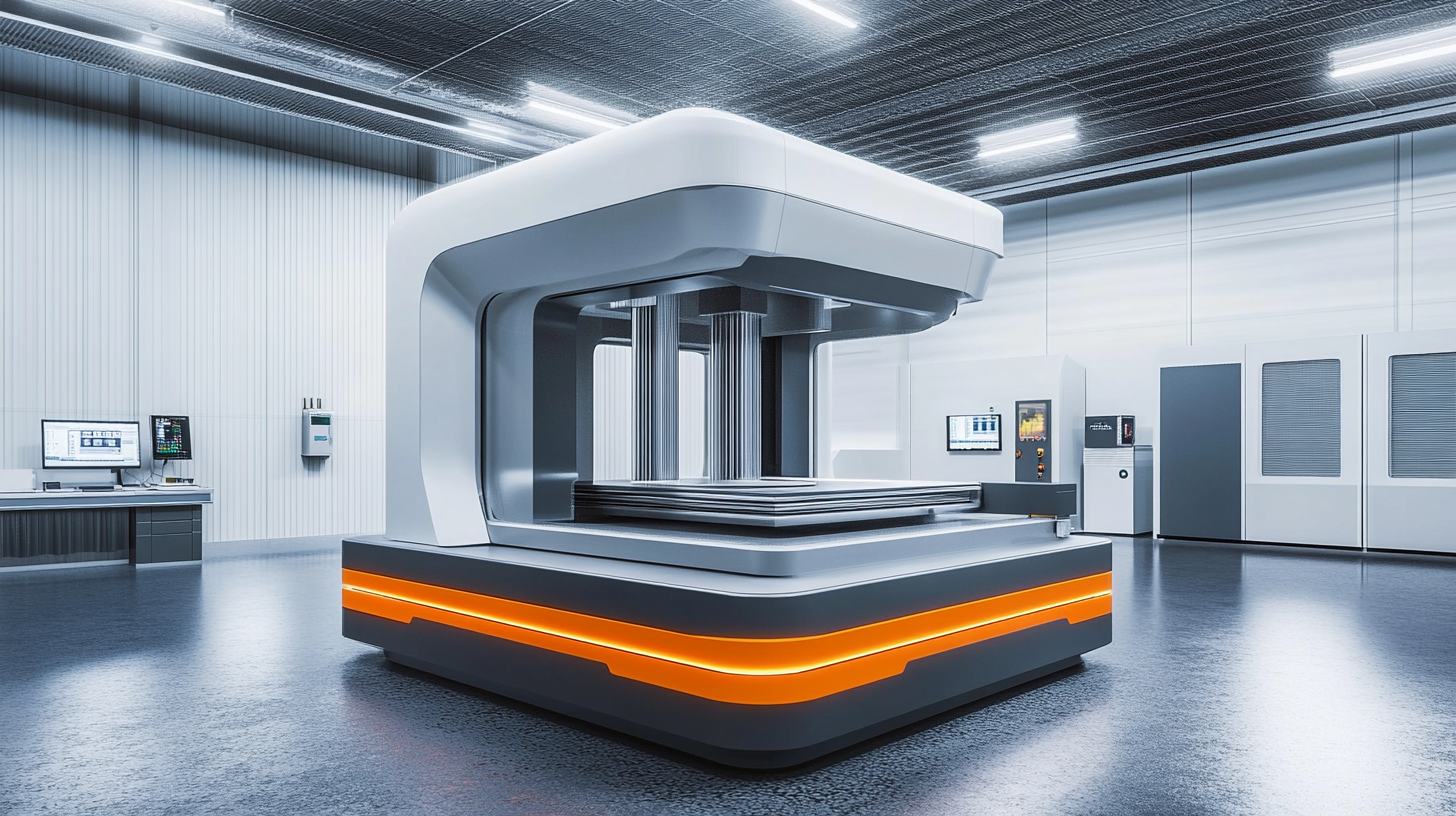Global Market Trends by 2025 The Evolution of Hot Isostatic Pressing Additive Manufacturing
The landscape of manufacturing is undergoing a profound transformation, driven by advances in technology and the pursuit of increased efficiency. Among these innovations, Hot Isostatic Pressing Additive Manufacturing (HIP-AM) has emerged as a leading technique, combining the robust capabilities of additive manufacturing with the advantages of hot isostatic pressing. According to a report by Market Research Future, the global market for additive manufacturing is projected to reach $39.2 billion by 2025, growing at an impressive CAGR of 14.44%. This growth is significantly attributed to the rise of HIP-AM, which promises to enhance material properties and reduce production costs, making it a game-changer across various industries, including aerospace, automotive, and medical.
As manufacturers seek to optimize production processes and innovate new solutions, the adoption of Hot Isostatic Pressing Additive Manufacturing is expected to surge. A study by Grand View Research highlighted that the aerospace sector alone is anticipated to account for over 30% of the additive manufacturing market by 2025, driven largely by the demand for lightweight, high-strength components. This trend illustrates not only the increasing reliance on advanced manufacturing technologies but also the importance of HIP-AM in meeting the evolving needs of industries keen on enhancing their competitive edge in the global market.

The Impact of Hot Isostatic Pressing on Metal Additive Manufacturing
The impact of Hot Isostatic Pressing (HIP) on metal additive manufacturing is becoming increasingly significant as the industry evolves towards more robust and refined processes by 2025. HIP technology enhances the qualities of metal components produced via additive manufacturing by applying high pressure and temperature, thereby eliminating porosity and improving density. This process is crucial in industries where material integrity is paramount, such as aerospace and medical devices, where even the slightest imperfections can lead to failure. Recent trends indicate that the integration of advanced ceramics into 3D printing technologies is poised to reshape the landscape of materials available for additive manufacturing. With advancements such as reactive sintering of silicon carbide, manufacturers can produce components that display exceptional mechanical and thermal properties. A report by Huasheng Securities highlights that advanced ceramics have become a vital component in new materials, with applications expanding significantly in sectors requiring high-performance materials. Furthermore, the increasing use of aluminum oxide ceramics, known for their high insulation and corrosion resistance, underscores the potential growth in hybrid manufacturing approaches that combine metal and ceramic processing. As industries lean towards more sustainable and efficient manufacturing methods, the convergence of HIP and additive manufacturing may pave the way for more innovative solutions that leverage the best characteristics of both metals and ceramics. This synergy may lead to more reliable and efficient products, ultimately driving market growth in the coming years.

Key Drivers Shaping the Future of Global Market Trends by 2025
As we approach 2025, the landscape of the global market is set to undergo significant transformation, particularly in the field of Hot Isostatic Pressing (HIP) and additive manufacturing. The convergence of advanced technologies, rising demand for high-performance materials, and an increasing emphasis on sustainability are key drivers shaping this evolution. Manufacturers are integrating HIP into their additive processes to enhance the mechanical properties of components, addressing the need for stronger, more reliable products in industries such as aerospace, automotive, and medical.
Another crucial driver is the rapid advancement in material science, leading to the development of new alloys and composites specifically tailored for HIP applications. This innovation allows for greater design flexibility and the ability to produce complex geometries that traditional manufacturing methods cannot achieve. Additionally, as global environmental concerns rise, companies are increasingly focusing on recycling and reducing waste, positioning HIP as an eco-friendly solution in the metalworking sector.
The integration of smart technologies, such as AI and data analytics, is also revolutionizing the HIP process. These technologies enable real-time monitoring and optimization of manufacturing parameters, ensuring not only efficiency but also the quality of the end products. As we move toward 2025, businesses that recognize and adapt to these drivers will be well-positioned to thrive in the competitive landscape, harnessing the benefits of HIP and additive manufacturing to meet the ever-evolving needs of the market.

Technological Advancements in Hot Isostatic Pressing and Their Effects
As we look toward 2025, the evolution of hot isostatic pressing (HIP) technology marks a significant shift in the landscape of additive manufacturing. Technological advancements in HIP are crucial, as they provide vital improvements in the mechanical properties and performance of various materials. This process, which applies uniform pressure and temperature, enhances the microstructure of materials, resulting in better density and reduced porosity. Such improvements are instrumental for industries that require high-performance components, such as aerospace, automotive, and medical devices.
The rising demand for high-quality materials is reflected in the growth of the global powder metallurgy market, projected to reach USD 6.38 billion by 2034, with a CAGR of 8.62%. This uptick is fueled by continued innovations in powder processing techniques and the increasing adoption of HIP in producing complex geometries that traditional manufacturing methods struggle to achieve. By integrating HIP with additive manufacturing, companies can optimize production efficiencies while creating lightweight, strong materials that meet stringent industry standards.
Moreover, research into the properties of hot isostatic pressed materials, such as titanium alloys, has shown promising results. Studies highlight how coatings, like hot-dip aluminum, can further enhance surface properties, driving the need for advanced manufacturing processes. As various sectors push the boundaries of what's technologically possible, the synergy between HIP and additive manufacturing will undoubtedly play a pivotal role in shaping the future of product development.

Market Opportunities for Additive Manufacturing in Aerospace and Automotive Sectors
The rapidly evolving landscape of additive manufacturing is poised to create significant opportunities in the aerospace and automotive sectors by 2025. As industries increasingly adopt advanced manufacturing technologies, the market for additive manufacturing is projected to exceed $95.31 billion by 2032, with a compound annual growth rate (CAGR) of 18.5% from 2022 to 2032. This remarkable growth can be attributed to a greater emphasis on customized production, lightweight components, and the integration of new materials.
One of the critical trends shaping the automotive industry is the rising application of carbon fiber composites, which are expected to reach a market size of $21.7 billion by 2024, growing at a CAGR of 5.4% from 2025 to 2034. These materials offer unparalleled advantages in terms of performance and durability, particularly for components like cylinder liners that are crucial to engine functionality. As automotive manufacturers seek to enhance efficiency and reduce weight, the shift towards additive manufacturing presents a compelling solution.
Furthermore, the aerospace sector is also embracing additive manufacturing for its ability to produce complex geometries that traditional methods cannot achieve. This shift is not only expected to streamline production processes but also to significantly cut costs, especially for small to medium-sized components that are integral to aircraft systems. The ongoing integration of digital manufacturing technologies reflects a broader trend towards smart factories, where real-time data and automation improve operational efficiency and product quality. Overall, the convergence of these trends indicates a robust future for additive manufacturing, particularly within aerospace and automotive sectors, as stakeholders leverage new technologies to meet evolving consumer demands and regulatory requirements.
Sustainability and Cost Efficiency in Hot Isostatic Pressing Processes
The manufacturing landscape is rapidly evolving, with sustainability and cost efficiency taking center stage in Hot Isostatic Pressing (HIP) processes. By 2025, the market for HIP technologies is anticipated to surge, with projections indicating a growth rate of approximately 6.5% CAGR, reaching a valuation of over $1.2 billion. This surge is primarily driven by the increasing demand for lightweight materials in aerospace and automotive industries, where both quality and environmental considerations are paramount.
A key aspect of enhancing sustainability in HIP processes is the reduction of material waste. According to recent studies, HIP can improve material utilization by up to 90% compared to traditional manufacturing methods. This significant reduction not only minimizes waste but also lowers the overall production costs. Furthermore, the integration of additive manufacturing with HIP techniques is expected to optimize energy consumption, leading to a more eco-friendly production line. For instance, a report by the American Society of Mechanical Engineers (ASME) indicates that the combined processes could lower the carbon footprint by an estimated 30% by utilizing recycled materials.
In parallel, the advancement of automation and digitalization in HIP operations enhances cost efficiency. Research has shown that implementing advanced monitoring systems can reduce cycle times by 15-20%, effectively streamlining processes and reducing labor costs. Additionally, as manufacturers shift towards more sustainable practices, investing in HIP technology not only promises long-term savings but also aligns with global initiatives aimed at reducing industrial emissions. These trends are paving the way for a more sustainable future in manufacturing, positioning HIP as a critical player in achieving both economic and environmental goals by 2025.
